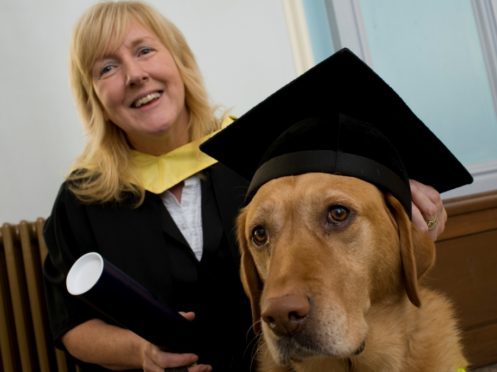Dr Mhairi Thurston was working as a school teacher when she developed a very serious eye condition which cost her sight.
Dr Thurston, who is now a senior lecturer at Abertay University, was 40 when she was diagnosed with retinitis pigmentosa.
In spite of her serious condition, Dr Thurston has been able to develop her career in counselling and education, with support she credits to the Royal National Institute of Blind People (RNIB).
The organisation celebrates its 150th birthday on Tuesday, after being initially established to improve the availability of literature for people with sight loss.
Dr Thurston, whose work focuses on the social and emotional effects of acquired sight loss, said the institution has been pivotal in improving the lives of people affected by blindness.
She said: “In my experience, RNIB in Scotland works tirelessly to improve the lives of blind and partially sighted people like myself.
“I have been particularly impressed by their campaigning around issues of accessibility and inclusion.
“It’s also good to see them engaging in developing services to help people cope emotionally with a diagnosis of sight loss, which we know to be particularly challenging.”
Sandra Wilson, the Kirkcaldy-based chair of RNIB Scotland, lost her own sight at the age of four.
She said: “Since we began in 1868, RNIB has helped to vastly improve the lives and prospects of those who’ve lost some or all of their sight.
“In the Victorian era, when RNIB was launched, the lives of the blind were usually bleak.
“Without a welfare system, those who couldn’t work and had no families to support them had only the poorhouse to turn to.
“But life there was a very harsh and frugal one. What work was available was mainly limited to piano-tuning or selling matches.”
She continued: “New technology has helped people gain more independence. Today people with even severe sight loss work as broadcasters, school teachers and civil servants.
“Our vision of the future is a world free of barriers for people with sight loss. Working with our partners in other charities, business and government, we want to make sure everyone can access the advice and support they need, that nobody feels alone in a world that includes and values us all.
“It’s an ambitious vision but one I’m confident we can achieve.”










